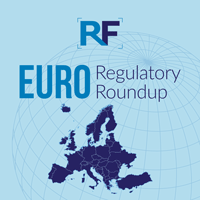Euro Roundup: EU Parliament adopts position on expanded EMA mandate
 Biologics/ biosimilars/ vaccinesBiotechnologyEuropeMedical DevicesPharmaceuticalsProduct LifecycleRegulatory Intelligence/PolicySupply Chain Management
Biologics/ biosimilars/ vaccinesBiotechnologyEuropeMedical DevicesPharmaceuticalsProduct LifecycleRegulatory Intelligence/PolicySupply Chain Management Biologics/ biosimilars/ vaccinesBiotechnologyEuropeMedical DevicesPharmaceuticalsProduct LifecycleRegulatory Intelligence/PolicySupply Chain Management
Biologics/ biosimilars/ vaccinesBiotechnologyEuropeMedical DevicesPharmaceuticalsProduct LifecycleRegulatory Intelligence/PolicySupply Chain Management